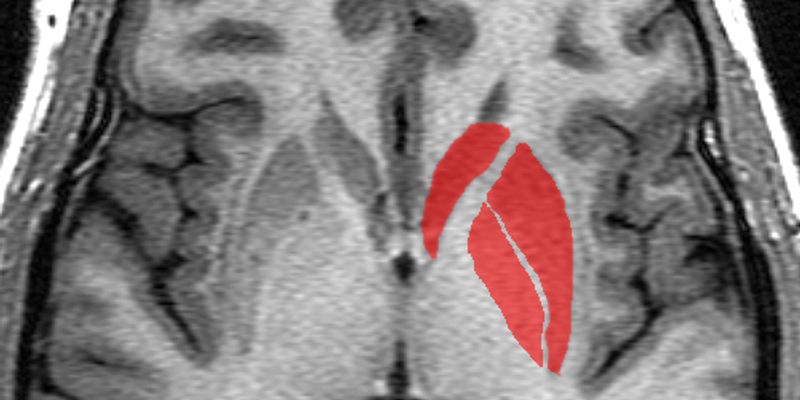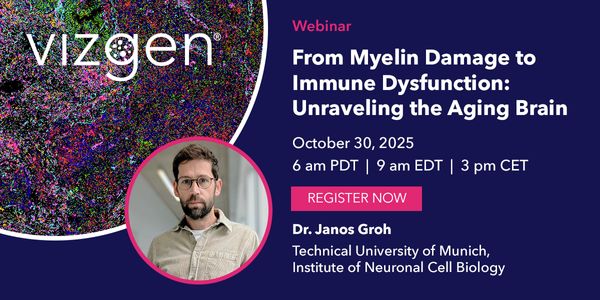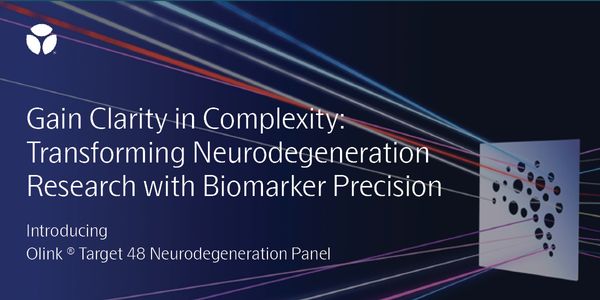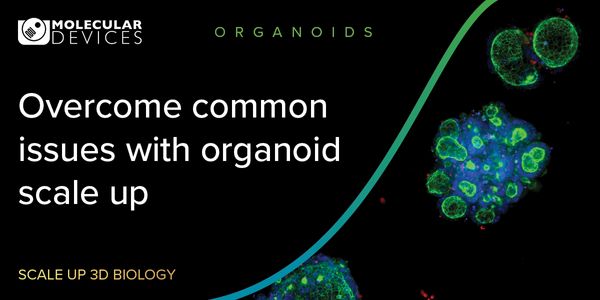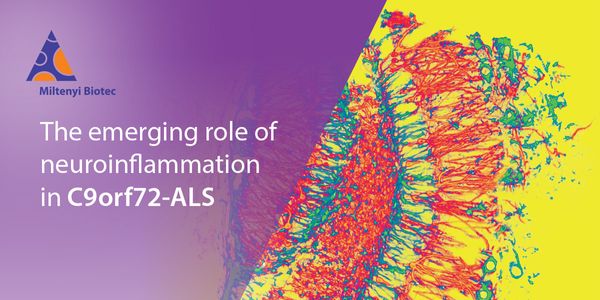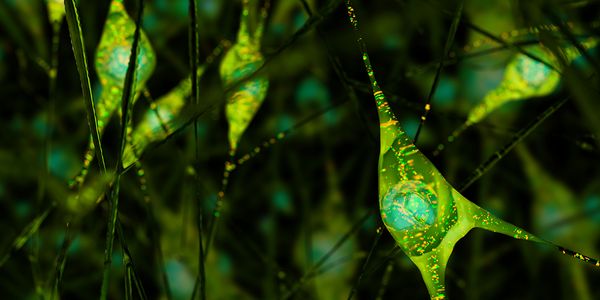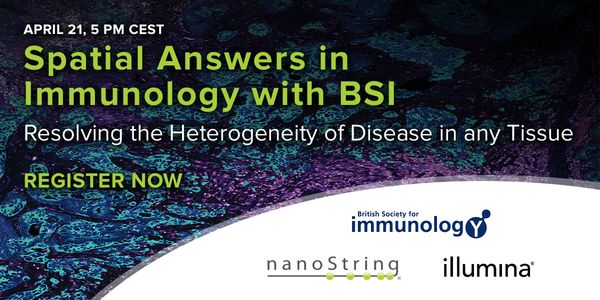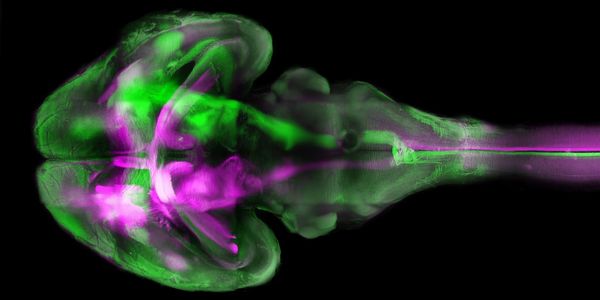Neurodegeneration
Neurodegeneration: The continuous loss of neuronal structure or function of neurons, including death of neurons. This loss can ultimately lead to cognitive disability and dementia. Usally, neurodegeneration is linked to a disease such as Parkinson's disease, Alzheimer's disease, and Huntington's disease.
-
NOV 19, 2025 | 2:00 PMFluid biomarkers for Alzheimer’s disease (AD) have advanced rapidly during the past several years driven by breakthroughs including development of ultrasensitive and multiplexing techn...OCT 30, 2025 | 9:00 AMAging is associated with progressive white matter degeneration, which impairs brain structure and function. Defects in myelinating glial cells, combined with chronic neuroinflammation, contr...SEP 17, 2025 | 7:00 AMNeurodegenerative diseases are among the most complex and urgent challenges in medicine, characterized by their heterogeneity, limited available biomarkers, and lack of effective treatments....Brain organoids are self-assembled three-dimensional cellular aggregates with cell types and tissue architectures that resemble the embryonic human brain. As they recapitulate many key featu...
DEC 07, 2023 | 8:00 AM
As the vast landscape of genetic oncology continues to expand, the ability to understand and utilize the full potential of this rich data becomes increasingly challenging. As a result, resea...
OCT 25, 2023 | 10:00 AM
Oxidative stress, a critical factor affecting cell health, has gained prominence in assessing various medical conditions. Given this importance, researchers need a wide range of tools to tho...
Speaker:
Daniel Sem, Ph.D., MBA, JD
, Roxanne Alvarez, Ph.D.
Sponsored By: BrainXell,
Vivid Microscopy
OCT 24, 2023 | 8:00 AM
Organoids are three-dimensional (3D) multi-cellular, microtissues derived from stem cells that closely mimic the complex structure and functionality of human organs. They offer more accurate...
OCT 24, 2023 | 10:00 AM
Organoids are three-dimensional (3D) multi-cellular, microtissues derived from stem cells that closely mimic the complex structure and functionality of human organs. They offer more accurate...
AUG 23, 2023 | 10:00 AM
C9orf72 repeat expansions cause inherited amyotrophic lateral sclerosis/frontotemporal dementia (ALS/FTD) and result in both loss of C9orf72 protein expression and production of potentially...
AUG 01, 2023 | 10:00 PM
Stem cells have the capability to develop into any specialized cell type, which makes them a valuable resource in research and regenerative medicine. Differentiated stem cell models provide...
Phosphorylation of α-synuclein at the Serine-129 site (α-syn Ser129P) is an established pathologic hallmark of synucleinopathies and a therapeutic target. In physiologic states,...
Speaker:
Dr. Leonardo Parra-Rivas
Presented at: GenScript 3rd Annual Gene and Cell Engineering Summit
MAR 28, 2023 | 3:30 AM
Date: March 28, 2023 Time: 3:30am (PDT), 6:30am (EDT), 12:30pm (CEST) Biofluid-based neurological biomarkers have shown promise in helping to improve diagnostic accuracy, predict disease pro...
Speaker:
Steffen Halbgebauer, PhD
, Dr. Hayrettin Tumani
, Yoav Noam, PhD
Sponsored By: Bio-Techne
Preclinical research and development are the cornerstone of modern drug discovery. A variety of biological systems including in vitro, 3D cultures, and organoids are essential tools, with ul...
Some of the earliest symptoms of Alzheimer’s disease (AD) are loss of orientation, wandering and misplacing items. One of the first regions vulnerable to AD pathology is the entorhinal...
Alzheimer’s and Parkinson’s diseases (AD, PD) are the two most common neurodegenerative disorders. Both diseases are characterized by abnormal aggregates in the brain, which incl...
Selective vulnerability of brain regions and specific neural populations in neurodegeneration remains little understood. We hypothesize that pre-existing physiological differences in neurons...
OCT 04, 2022 | 7:00 AM
Date: October 04, 2022 Time: 7:00am (PDT), 10:00am (EDT), 4:00pm (CEST) The ability to derive induced pluripotent stem cells (iPSCs) from differentiated cell types such as fibroblasts, has r...
JUL 19, 2022 | 8:00 AM
Date: July 19, 2022 Time: 8:00am (PDT), 11:00am (EDT), 5:00pm (CEST) Cryo-EM is rapidly becoming the method of choice for structural biologists and biochemists around the world, helping thes...
Speaker:
Melissa Chambers
, Natalia de Val
Presented at: Thermo Fisher Scientific - Electron Microscopy Webinars
Sponsored By: Thermo Fisher Scientific
Sponsored By: Thermo Fisher Scientific
Neurological manifestations, including headache, altered mental status, and stroke, are a major complication of severe acute respiratory syndrome coronavirus-2 (SARS-CoV-2) infection and cor...
In this preliminary experiment, we used spatial transcriptomics to assess the gene expression profiles of microglia or astrocytes in relation to their distance from plaques. We compared 18-m...
Speaker:
Frances Edwards, PhD
